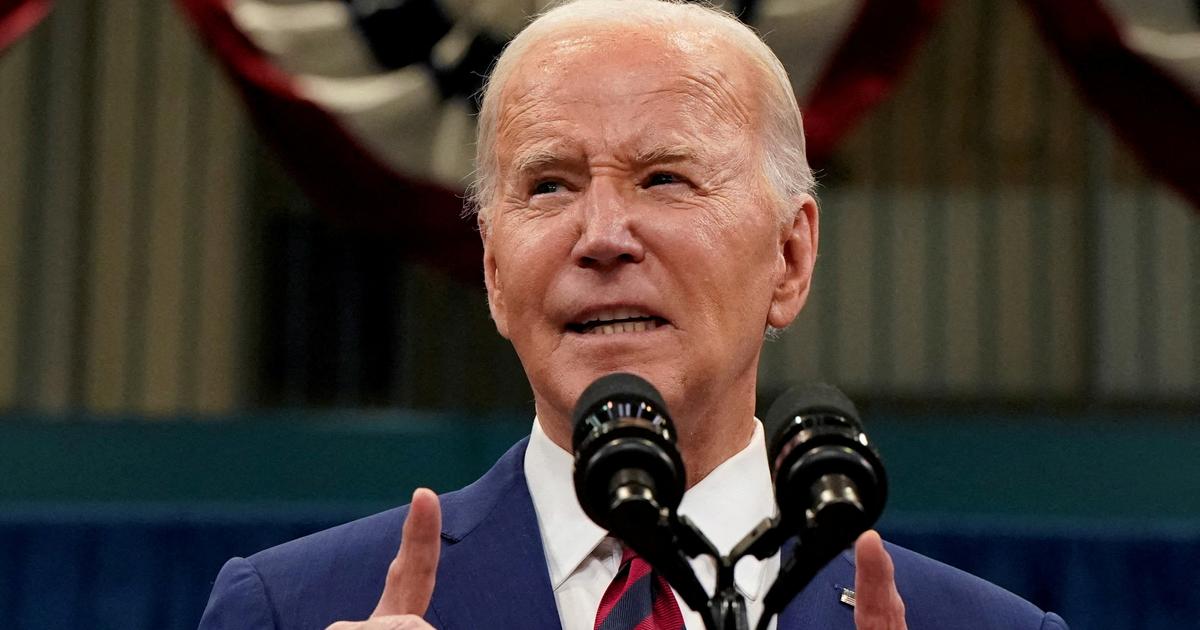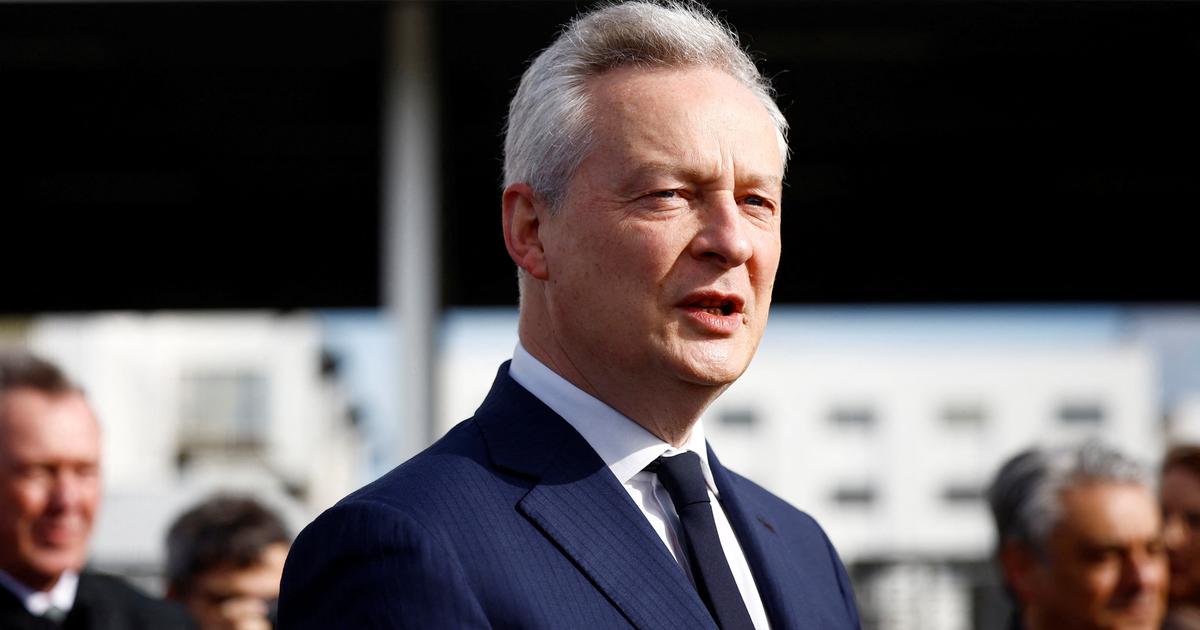The records of the last decades show that the consensus of economists, unlike the markets, has not anticipated any of the recessions that have occurred since the 1970s.
Now, that same consensus points out that the combination of inflation, interest rate rises, the weakness of the Chinese economy and geopolitical uncertainty has a great probability (of more than 60%) of ending up leading to a recession.
And precisely for this reason, some say that if economists foresee a recession, it most likely will not happen.
2022 was called to be the year of full recovery after the pandemic, the end of restrictions and a return to normality.
And it has ended up becoming the year of war, of inflation, of crises in the prices of energy and raw materials, of droughts and floods.
It has also been the year of the paradigm shift in central banks, mired in the hard task of fighting inflation at any price, saying goodbye to near-zero interest rates, the end of cheap energy and such globalization. and how we knew it.
Yves Bonzon, chief investment officer at Swiss private bank Julius Baer, acknowledges in his latest analysis that it is not easy to make guesses in these circumstances.
“2022 has been a bleak year for economic forecasts and 2023 won't be any easier to read,” he says.
With the number of
black swans
and
gray rhinos
that have materialized in recent years, the exercise of making forecasts is even more complicated.
But basically the key question for 2023 is whether central banks are going to be able to reduce inflation not to their target of 2% but to acceptable levels without causing a recession, or at least without it being very deep.
And while the regional differences are notable, the risks are very high.
After insisting for months that inflation was first temporary and then transitory, the central banks came face to face with price levels they had not seen since the 1980s and which led them to react with higher interest rate hikes. aggressive in these four decades.
The price of money has gone from 0.25% in March in the US to 4.5%;
In the European case, the European Central Bank (ECB) has raised rates from 0% to 2.5% between July and December.
On both sides of the Atlantic, the slogan is that interest rate rises will continue until inflation approaches the 2% target.
What they convey is that they are trying to recover the lost ground in terms of credibility due to their miscalculations.
Although in recent months inflation has begun to ease in the United States and in some Eurozone countries, such as Spain, it is still in double digits in economies such as Germany, the United Kingdom, and Italy.
A good number of economies in Latin America, as well as in Eastern and Central Europe, began to raise rates to deal with inflationary pressures long before their peers in developed economies.
None of these countries has managed to break inflation, however their activity in general terms has behaved better than expected.
Economists expect rates to ease in the coming quarters as this year's shocks to energy and food prices begin to fade from year-on-year comparisons.
But new tensions in the energy field cannot be ruled out either, given that "the global gas market is so stressed that it would be unable to accommodate almost any increase in European demand next year, assuming the expected recovery in Asian demand materializes." ”, explains Edoardo Campanella, economist at Unicredit.
With no end in sight to the war in Ukraine, what will happen to energy prices next winter will also be at stake in the coming months.
In addition, just as the effects of monetary policy take between 6 and 18 months to be felt in the economy, fiscal stimuli also have lagged effects.
And aid packages such as the one promoted by Germany, of 200,000 million euros, or the bulk of the European Next Generation funds have yet to land in the economy.
The situation is similar in the United States, where after stimulus checks for US households and unemployment benefits, citizen savings have gone from around a trillion dollars before the pandemic to 4.7 trillion in the second quarter of this year, according to Bloomberg data.
salary increases
There are other factors that are going to help keep inflation high – including the core rate – for quite some time, as Stefan Hofrichter, Allianz's head of economics and strategy, points out: expected wage increases in key countries;
the fragmentation of the global economy, which makes supply chains more expensive and reduces the supply of crucial products such as semiconductors, and the fight against climate change, which causes energy prices to skyrocket during the transition towards a more sustainable model and efficient.
In this scenario, the prospect of central banks continuing to tighten monetary policy throughout 2023 is more than plausible.
"The Great Moderation, 40 years of activity and inflation practically stable, is over," conclude the economists at the BlackRock Investment Institute.
In this new regime, they continue, the central banks will no longer come to the rescue of activity as they have done in the past and this means that the recession —they conclude— is almost announced.
The truth is that if history serves as a reference, in these times of teleworking and digital economy whose effects are not entirely quantified, in the past central banks have not been able to reduce double-digit inflation levels without causing a recession.
It may be different this time, but it is convenient to be prepared for the opposite.
Some data anticipate a slowdown in activity, such as the Purchasing Managers' Index, which has been below level 50 for several months,
compatible with a contraction of activity.
Or the drops in industrial production, which anticipate a drop in GDP in the euro area and a notable slowdown in the US. On the positive side of the analysis, it is worth including China's recent decision to end the zero covid policy, which that has been received with joy by the markets.
But it should not be forgotten that the change towards coexistence with the coronavirus will be more difficult than some believe and that, in light of experience, new waves of infections can be expected in China, causing short-term disruptions in world activity. .
On the positive side of the analysis it is worth including China's recent decision to end the zero covid policy, which has been greeted with jubilation by the markets.
But it should not be forgotten that the change towards coexistence with the coronavirus will be more difficult than some believe and that, in light of experience, new waves of infections can be expected in China, causing short-term disruptions in world activity. .
On the positive side of the analysis it is worth including China's recent decision to end the zero covid policy, which has been greeted with jubilation by the markets.
But it should not be forgotten that the change towards coexistence with the coronavirus will be more difficult than some believe and that, in light of experience, new waves of infections can be expected in China, causing short-term disruptions in world activity. .
Until now, the strength of the labor market has protected the global economy from a possible hard landing, this resistance that has surprised many experts who predicted a recession in the main economies as early as 2022. But the increase in financing costs due to the rise in interest rates and the fall in disposable income represent an obvious drag on activity.
If we add to this the brake on the growth of corporate profits and the consequent slowdown in investment, everything indicates that they will end up triggering a recession.
“When your macroeconomic analysis and your own indicators say the same thing, don't ignore them,” says Neil Shering, chief global economist at Capital Economics.
“The consolation is that the recession should not be very deep: we are not facing a pandemic or a financial crisis,
as has happened with the last recessions of 2020 and 2008”, he stresses.
A mild recession will be followed by a weak recovery, says Unicredit chief economist Daniel Vernazza, and stagflation is a clear threat once the major economies move out of negative territory.
According to Fitch's calculations, in the case of the US and the euro area, each percentage point increase in interest rates reduces GDP by half a point.
The ECB has already raised rates by 2.5 percentage points and the Federal Reserve, 4.25 points.
The rating agency ensures that the real estate market is already suffering the consequences of more expensive financing, with a drop in residential investment of 8%.
Although the forecasts vary from one analysis house to another, the consensus indicates that the recession in the United States could be around -0.5%, while in the euro area and the United Kingdom the recession will be deeper (between -1.5 % and -2%) due to the greater impact of the energy crisis and trade ties with Russia.
Spain, according to almost all forecasts, would avoid entering a technical recession,
although its rate of growth would also deteriorate.
This week, the Bank of Spain set growth at 1.3% for 2023.
In the case of China, the second largest economy in the world, a recession is ruled out but experts estimate that its economy will be at the levels of mid-2021 by 2023, after almost two years of growth lost due to the management of the pandemic.
Forecasts point to a slow growth first half of the year as Beijing adjusts to the end of the zero covid policy, which experts do not expect to fully take effect until April, followed by a notable rebound in the second half of the year .
All in all, Goldman Sachs experts appreciate notable changes in the Chinese economy, which affect its growth bases.
On the one hand, the latest US restrictions on exports of advanced semiconductors, as well as the equipment capable of producing them, will reduce China's GDP by a quarter of a point in 2023 and 1,
7 percentage points of Chinese GDP by 2026. On the other hand, they calculate that a good part of the slowdown in Chinese growth in recent years corresponds to a reduction in its potential growth to 4.2%.
"We believe that potential growth will slow down to 3% in the next decade, as a consequence of both its demographic weakness and its productivity, as well as the long fall of the real estate market," says the US investment bank in one of its reports. .
Hence, more and more experts predict that Beijing will not be able to overtake the United States as the world's leading economic power, if that finally happens, before 2060, which would mean 30 years later than expected until recently.
calculate that a good part of the slowdown in Chinese growth in recent years corresponds to a reduction in its potential growth to 4.2%.
"We believe that potential growth will slow down to 3% in the next decade, as a consequence of both its demographic weakness and its productivity, as well as the long fall of the real estate market," says the US investment bank in one of its reports. .
Hence, more and more experts predict that Beijing will not be able to overtake the United States as the world's leading economic power, if that finally happens, before 2060, which would mean 30 years later than expected until recently.
calculate that a good part of the slowdown in Chinese growth in recent years corresponds to a reduction in its potential growth to 4.2%.
"We believe that potential growth will slow down to 3% in the next decade, as a consequence of both its demographic weakness and its productivity, as well as the long fall of the real estate market," says the US investment bank in one of its reports. .
Hence, more and more experts predict that Beijing will not be able to overtake the United States as the world's leading economic power, if that finally happens, before 2060, which would mean 30 years later than expected until recently.
as a consequence of both its demographic weakness and its productivity, as well as the long fall in the real estate market”, says the US investment bank in one of its reports.
Hence, more and more experts predict that Beijing will not be able to overtake the United States as the world's leading economic power, if that finally happens, before 2060, which would mean 30 years later than expected until recently.
as a consequence of both its demographic weakness and its productivity, as well as the long fall in the real estate market”, says the US investment bank in one of its reports.
Hence, more and more experts predict that Beijing will not be able to overtake the United States as the world's leading economic power, if that finally happens, before 2060, which would mean 30 years later than expected until recently.
pessimistic forecasts
With these wickerwork, the experts have lowered their growth forecasts and the consensus indicates that global GDP will be around 2.2% in 2023. According to the Institute of International Finance (IIF), if the effects are adjusted At baseline, global GDP will barely grow 1.2% next year, levels not seen since the Great Recession, with the exception of the 2020 pandemic, and consistent with what economists consider a de facto global recession.
Now that money is no longer free, risk has a price again.
The crisis unleashed in the United Kingdom with the punishment of the markets for the tax plans of the then Prime Minister Liz Truss demonstrated two things: the harsh reality of Brexit and that there will be zero tolerance for unsustainable tax plans.
For 2023, experts put Italy in the crosshairs of sovereign risk, with a public debt of around 150%, and Brazil, which will change government on January 1.
But as experience shows, once a stressful episode occurs in the markets, the possibility of contagion skyrockets.
And that threat will return, as some central banks, like the Federal Reserve,
they have begun the process of reducing the size of the balance sheet and that the ECB has announced that as of March it will stop buying government debt, which will once again be subject to the dictatorship of the markets.
With more public debt and higher financing costs, the fiscal adjustment plans will once again be on the table and investors will closely follow risk premiums.
"Welcome to the Godot recession," said Ray Farris of Credit Suisse in a note, paraphrasing Samuel Beckett's famous work.
Pessimism has a seductive edge and, given the experience of 2022, it is easy to get carried away by bad omens for 2023. Although the only thing that can be taken for granted at this point is that any scenario will be dominated by uncertainty and that even the recession that today seems inevitable may end up, like Godot, not coming.
Pipe systems at the gas receiving station of the Nord Stream pipeline in the Baltic Sea.Stefan Sauer (dpa/picture alliance via Getty I)
'Black Swans' and 'Gray Rhinos'
After what has been experienced in recent years, "there are no limits to what one can imagine will happen in 2023," confesses Erik Nielsen, economic adviser to the Unicredit group.
The truth is that the pandemic, the war in Ukraine, or the eruption of the La Palma volcano in the Spanish case, have brought back to the present day the theory of black swans described by the Lebanese philosopher and researcher Nassim Taleb in 2007. They are events. unexpected, with a great socioeconomic impact that can be explained in the past as if it had been possible to anticipate them in light of the data.
Although there are more who consider that what has happened in these years are gray rhinos, risks of high probability and great impact (such as environmental, technological or health) that, despite being recognized and evaluated, are ignored until it is too late, and they explode.
Nielsen's forecasts fit more among the gray rhinos, which he divides between politics and the economy and to which he assigns a probability of no less than 20%.
Among the policies, Nielsen expresses his concern about the US situation and fears that, with the House of Representatives under the control of a Republican Party thrown into the arms of populism, it could end up causing a debt ceiling crisis "that will leave the volatility caused by the tax plans for Liz Truss in the United Kingdom in child's play”, he points out.
He also warns of the change in alliances that is taking place in the Middle East, with China as a new regional player hand in hand with Saudi Arabia, as has been seen in Xi Jinping's recent trip to Riyadh.
On the economic side,
the one who has been the chief economist of the Italian entity for years points out the possible threat of a relapse into recession in the second half of 2023, if inflationary tensions persist, household purchasing power deteriorates and the impact of monetary policy .
“If that were the case, central banks would have to reverse the path of monetary policy,” he stresses.
Although he also sees similar possibilities of the opposite, a notable upturn in activity that forces the monetary authorities to continue raising rates to levels of 6%-7%, in the case of the Federal Reserve, and 4%-5% , for the European Central Bank.
Neither can a new supply shock in the energy field be ruled out, in his opinion, nor that the problems of the Chinese real estate sector go beyond its borders.
More provocative are the "scandalous" forecasts that the Danish bank Saxo Bank prepares each year at the hands of Steen Jakobsen, its investment director, who nevertheless have to their credit their advance of Brexit in 2016, the collapse of the Stock Market in 2008 or the rise of bitcoin in 2017. Among Saxo Bank's predictions for 2023 is the resignation of Emmanuel Macron as president of France and the arrival of Marine Le Pen to the Elysee, a victory for Labor in the United Kingdom and a new referendum for reverse Brexit, the escalation of gold to $3,000 per ounce, the implementation of price controls on basic products or the withdrawal of the IMF from the OPEC countries, China and India.
The recap?
Within 12 months.
The new geopolitics of world trade
The World Trade Organization (WTO) and the United Nations Conference on Trade and Development (Unctad) anticipate that the strength shown by world trade this year will slow down significantly in 2023. The deterioration of growth prospects, the high price of goods exchanged and the impact of the rise in interest rates on debt (public and private) will have a negative impact on the volume of exchanges of goods and services, although there are some positive factors such as the improvement in commercial logistics or some regional agreements.
Trade is expected to grow by around 1% next year, after the 3.5% forecast for this year.
However, the most important changes are related to the war in Ukraine.
The decision of the Western powers to progressively reduce their high dependence on Russian gas has led Russia to expand its customer base, to which it offers its products at a substantial discount.
As a consequence, India leads the countries that have increased their imports from Russia the most, with monthly increases of more than 100% since February, according to data from S&P Global.
For its part, in the first nine months of the year Gazprom increased its supply to China through the Poder de Siberia gas pipeline by 61%, according to Interfax.
By 2023, S&P estimates that China will be the destination for more than 25% of Russia's exports, up from 12% in 2018. Turkey, Belarus, Kazakhstan and South Korea will follow.
Experts warn that supply chains are adapting quickly to disruptions in the supply of energy and other raw materials, warning that if the conflict in Ukraine drags on, the changes may become permanent.
It is the theory of Ivan Krastev, a political scientist and president of the Center for Liberal Strategies in Sofia, who maintains that it is the middle powers that are reshaping geopolitics.
Is 2% valid as the CPI target?
This is not the first time that renowned economists have defended the need to revise the current inflation target of 2% upwards, accepted by the main central banks as a tool for their monetary policy.
The 2% target was a tool developed by the New Zealand central bank in the late 1980s and since then many things have happened in the economy, as profound as changes in the elements that make it up.
Now it is Olivier Blanchard, a senior fellow at the Peterson Institute for International Economics in Washington, who leads the voices calling for an upward revision of the inflation target.
His argument, which he already defended in 2010 when the main price threat was the opposite, deflation, is that a higher price target also implies higher nominal interest rates and offers more room for monetary policy to lower prices. rates should the economy demand it, while reducing liquidity risks associated with the zero lower bound.
With inflation back, and looking set to stay for quite some time, higher inflation targeting would prevent central banks from having to raise interest rates to levels that would strangle activity.
And, as James Ashley and Simona Gambarini, from Goldman Sachs, point out, it would make it possible to improve the dynamics of public debt, at a time of record levels of indebtedness, by de facto reducing part of the debt stock.
At the time, Blanchard, like Kenneth Rogoff, a professor of Economics and Public Policy at Harvard before him, proposed raising the inflation target to 4%.
He now believes that when prices in the United States reach 3% —the realistic target also proposed by Goldman Sachs— a debate will open as to whether it is worth the cost of reducing inflation to 2%.
With central banks fearing their credibility at risk, it does not seem easy for those changes to take place in 2023.
Subscribe to continue reading
Read without limits
Keep reading
I'm already a subscriber

/cloudfront-eu-central-1.images.arcpublishing.com/prisa/ESMA7V35ARH7HH5OADEER467NA.jpg)







